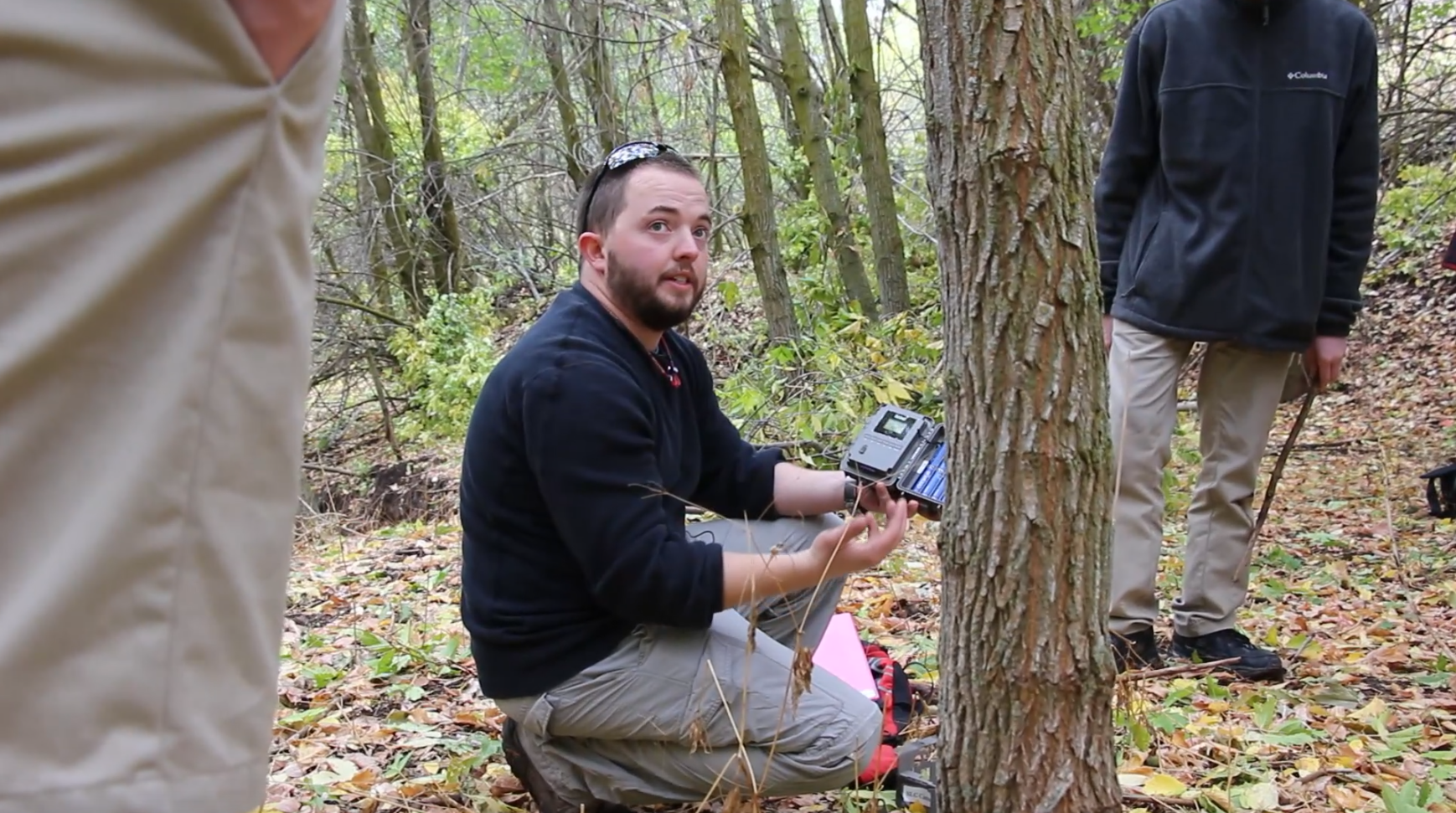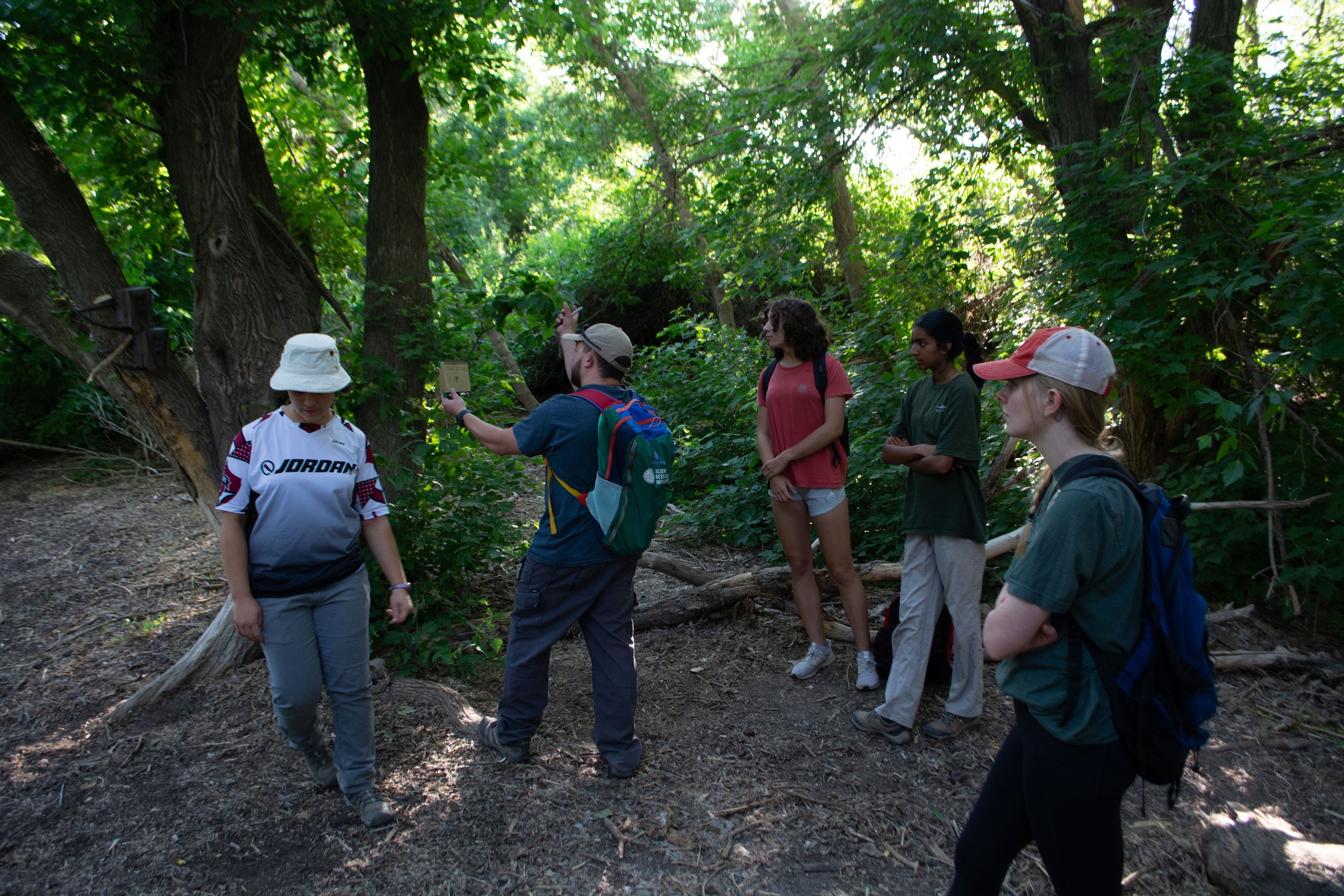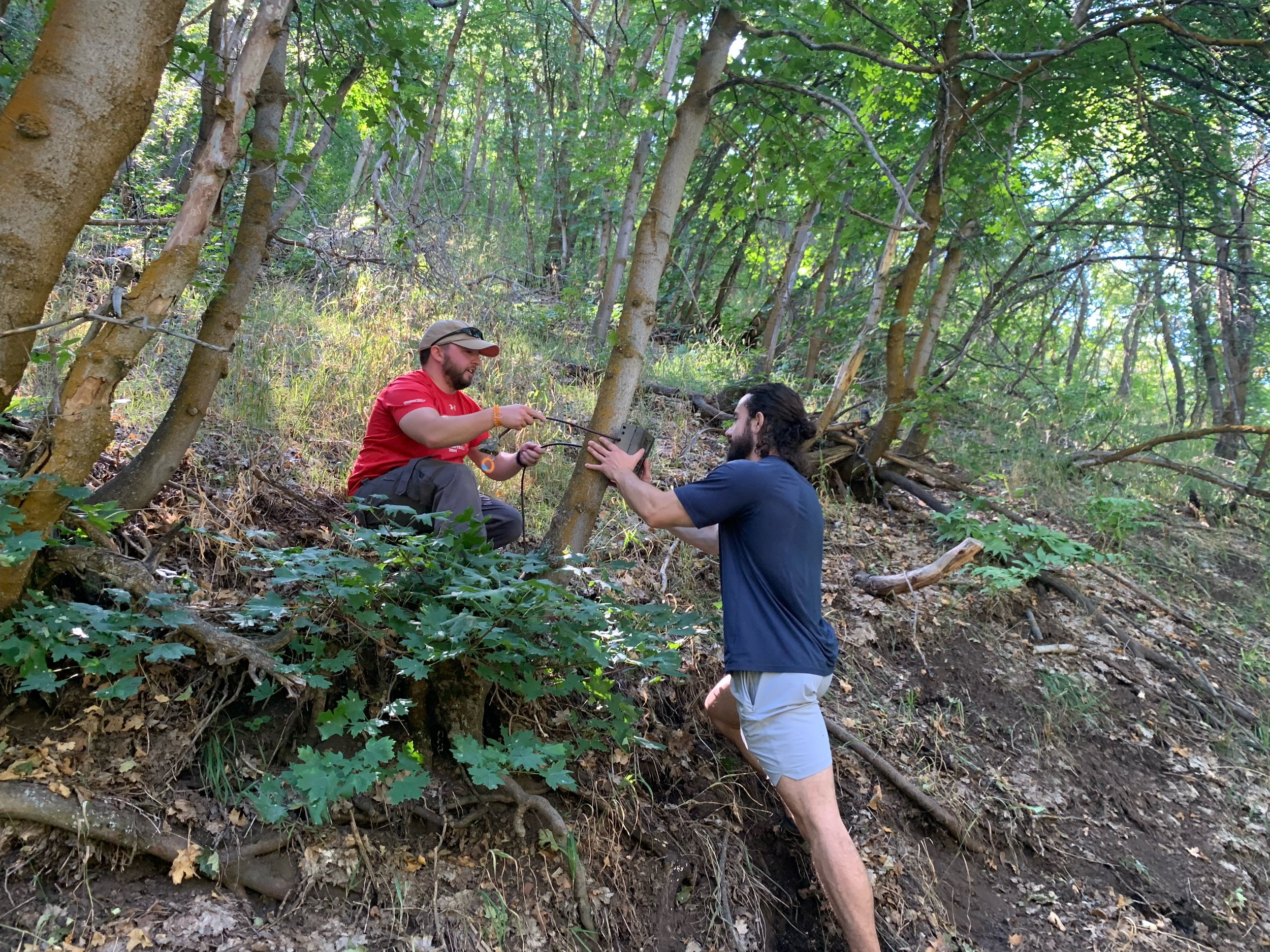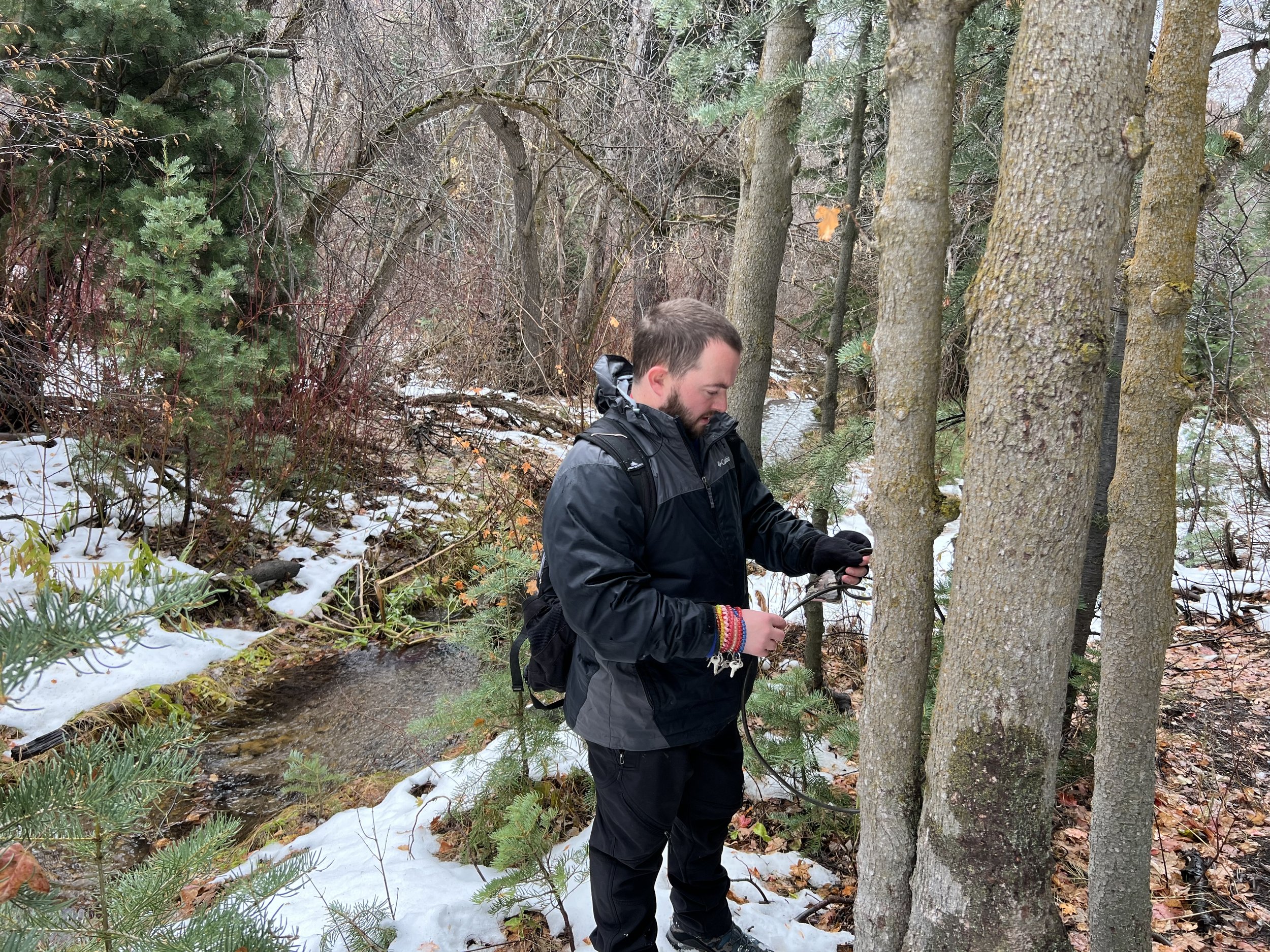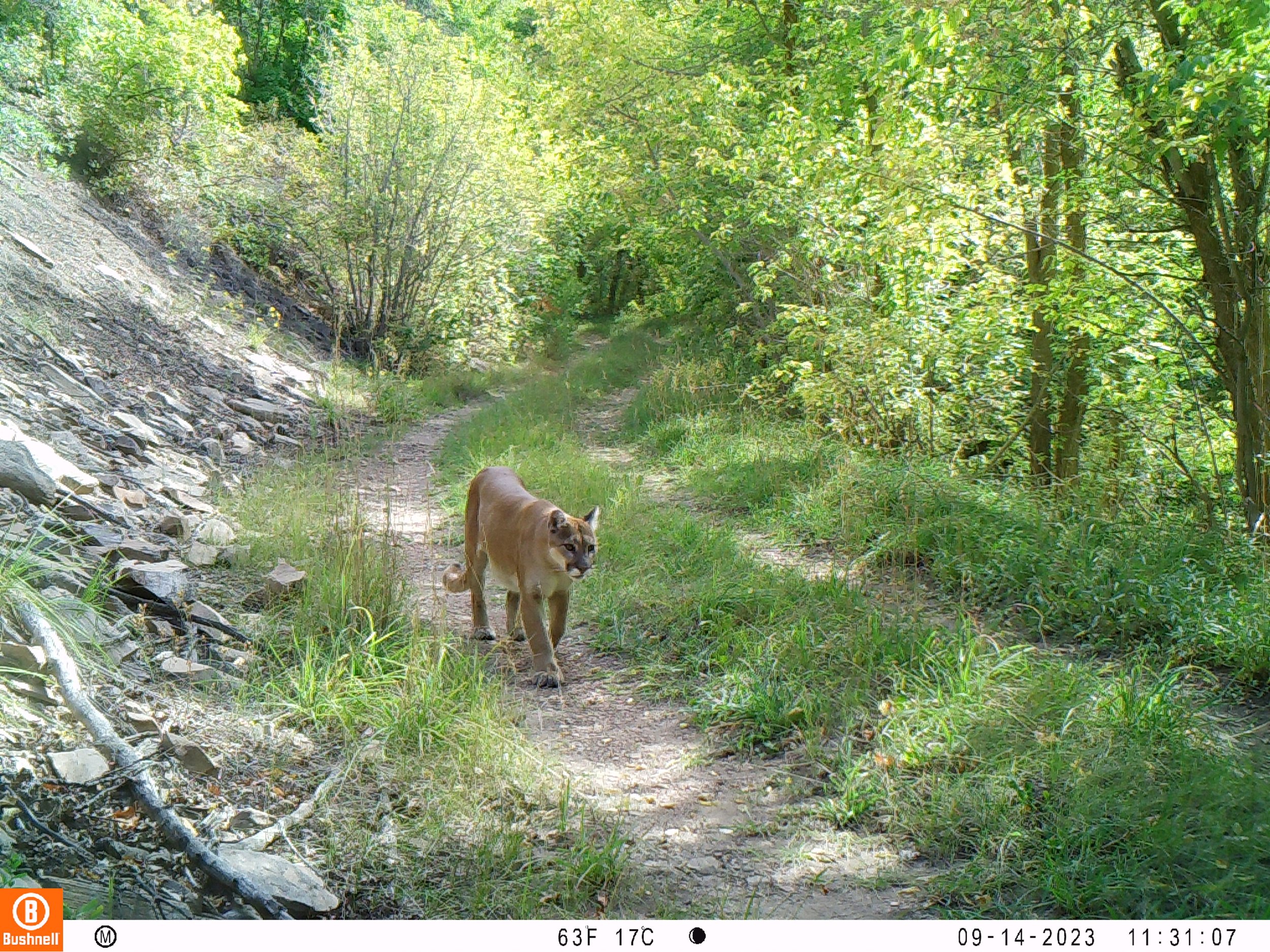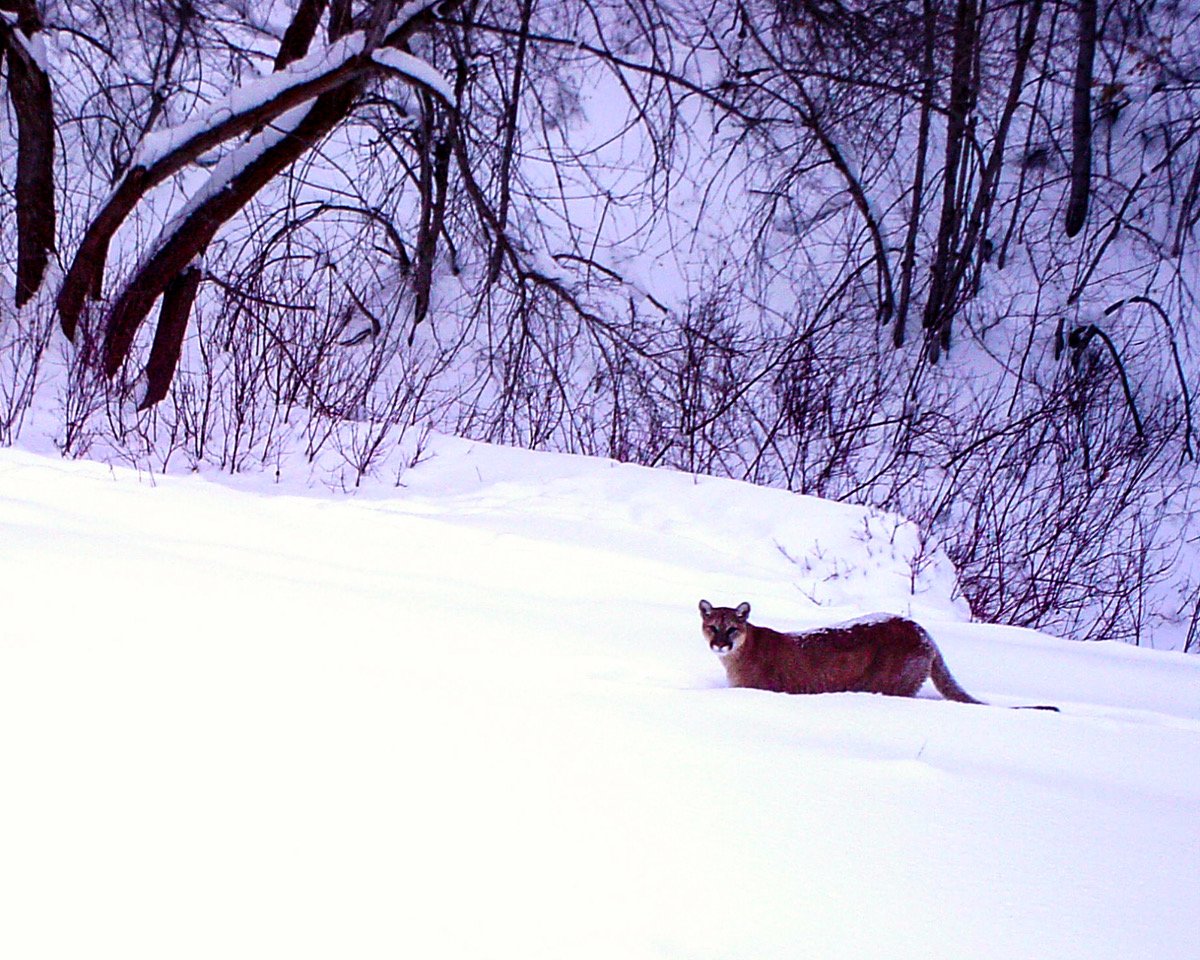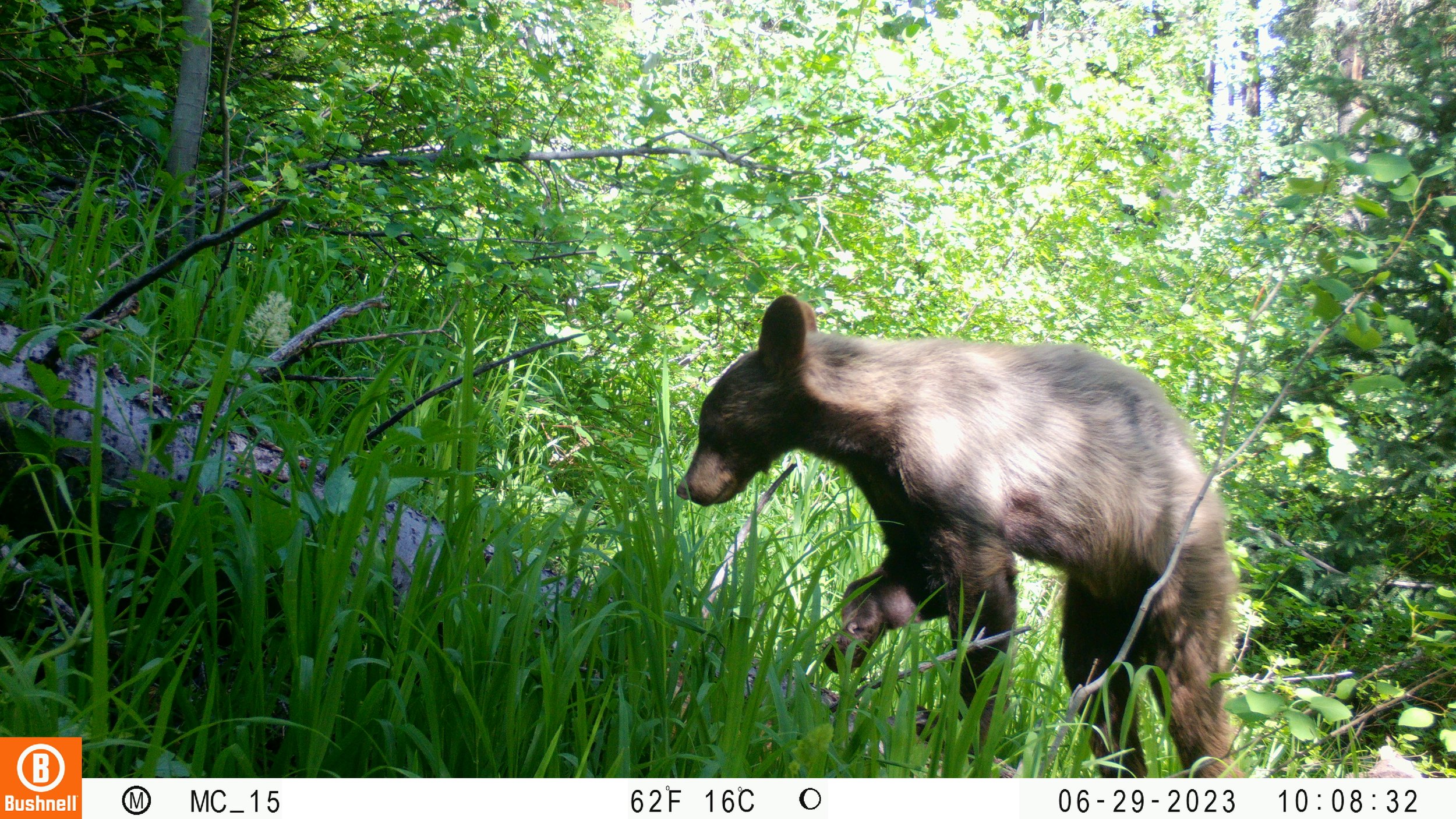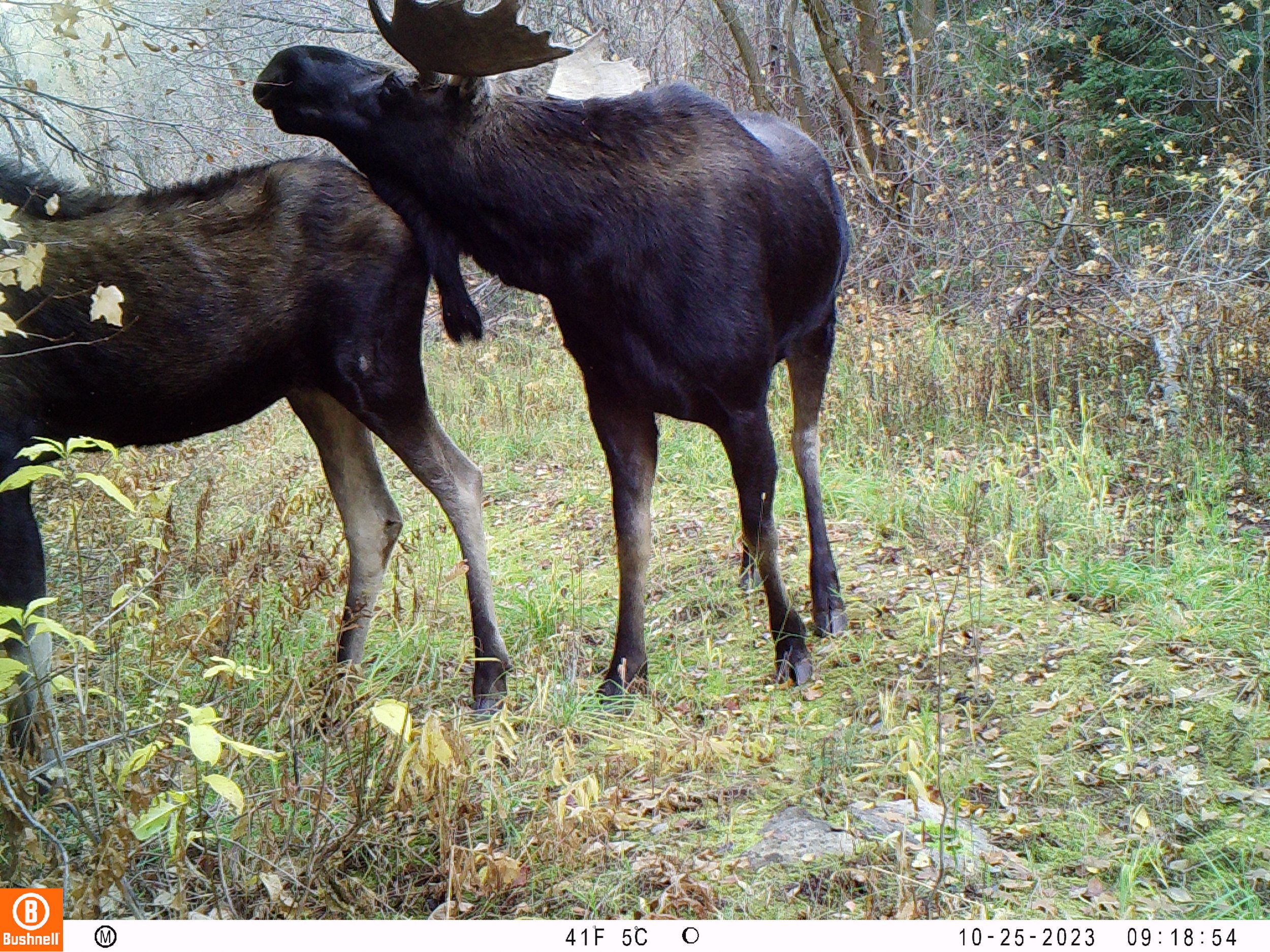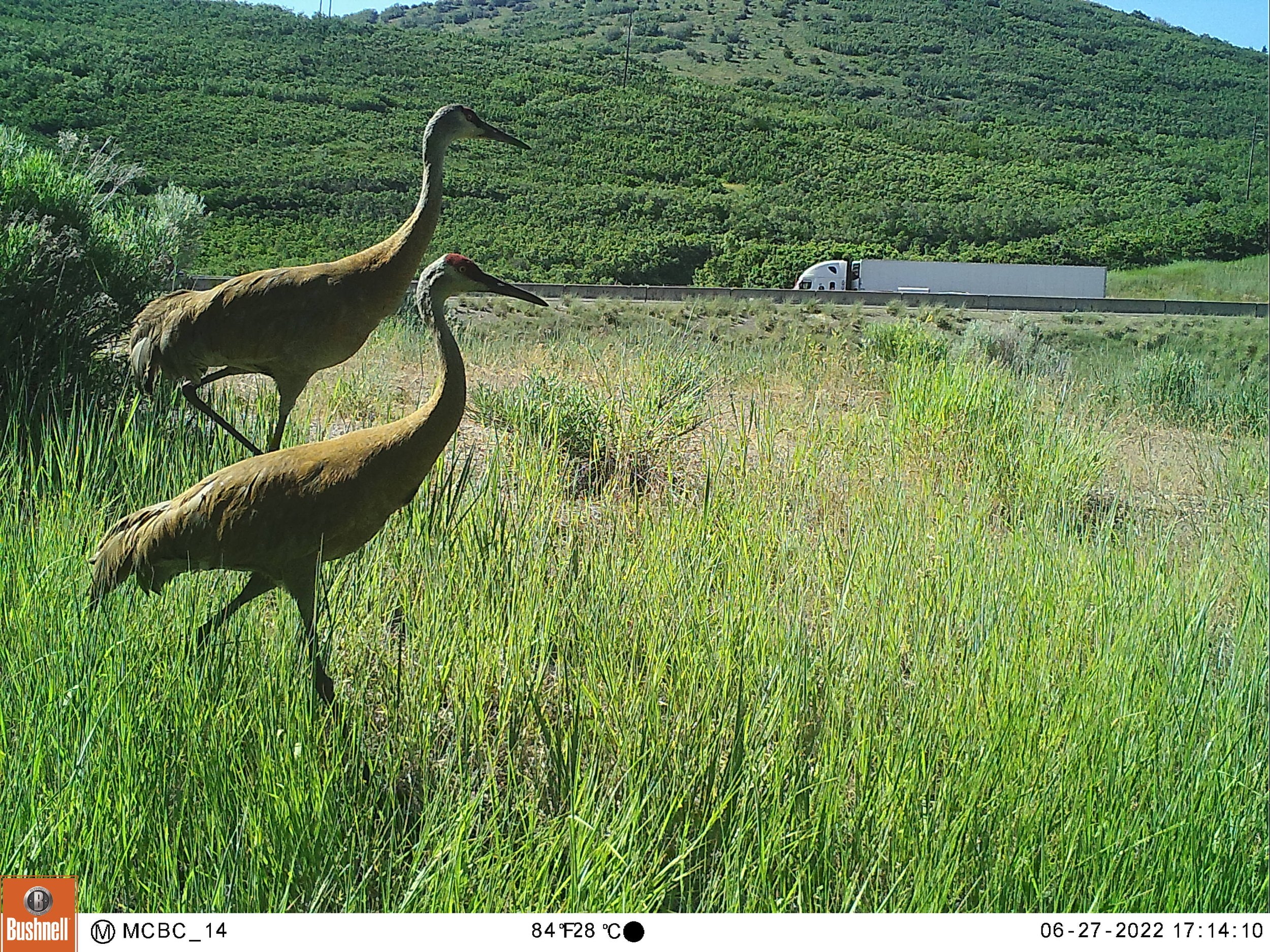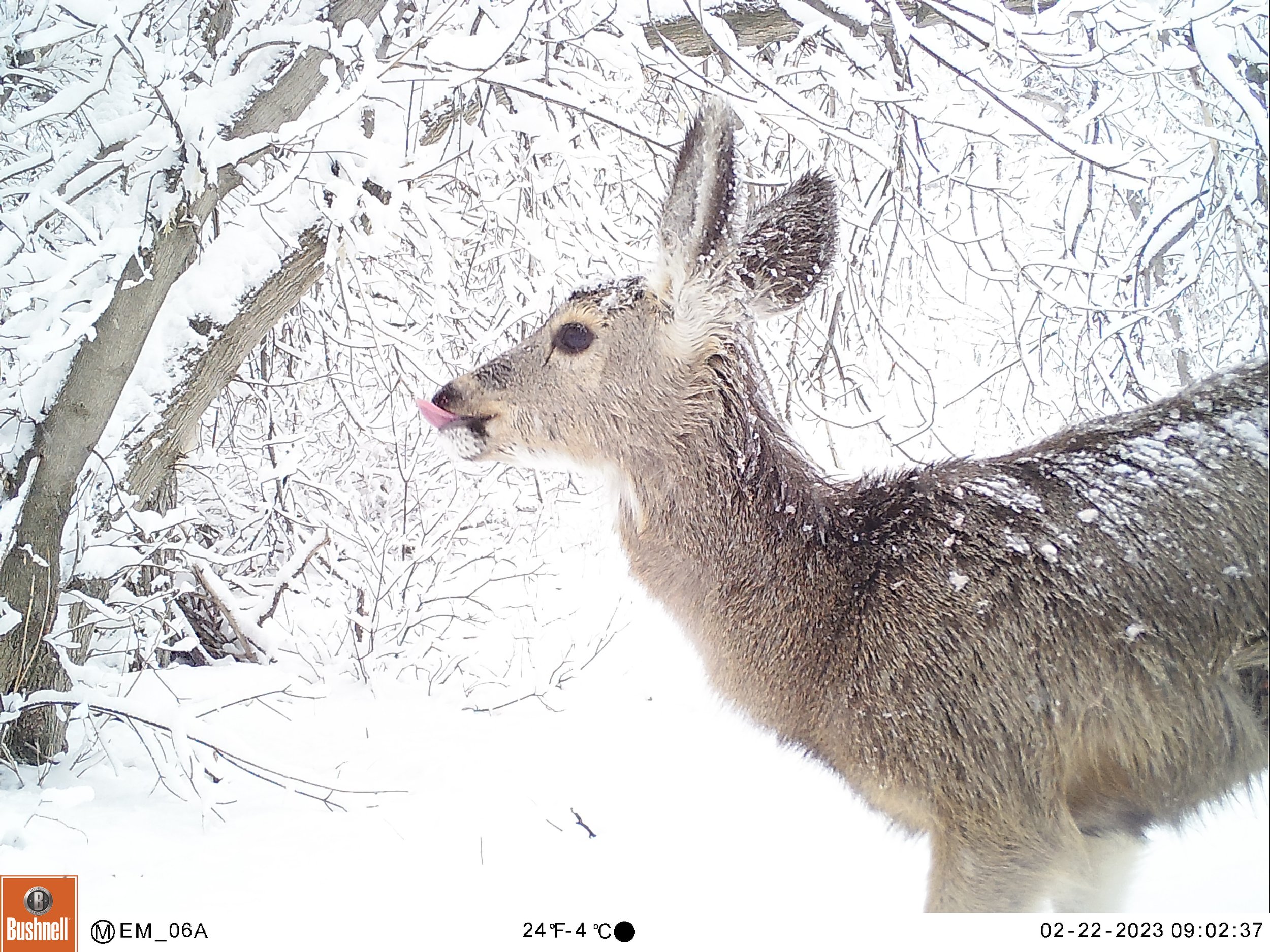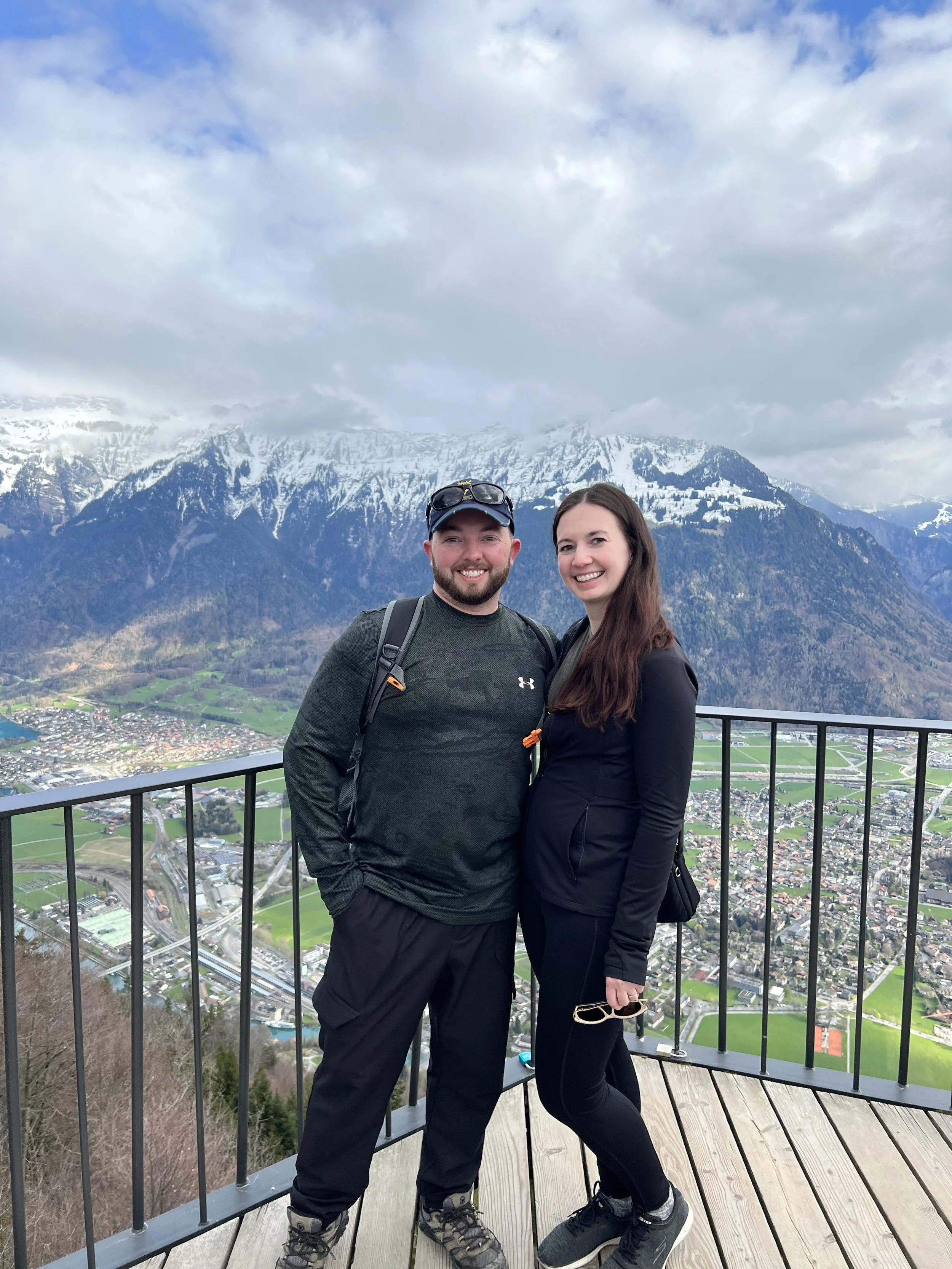Welcoming a Familiar Face to the Sageland Team
We are thrilled to welcome Austin Green to the Sageland Collaborative Team as our newest Ecologist & Conservation Biologist! In this role, Austin will continue to lead the Wildlife Watch project while also developing a new program focusing on habitat connectivity.
Austin is no stranger to the work that we do, having previously volunteered on the Boreal Toad Project before establishing Wildlife Watch as his Ph.D. project with the University of Utah’s Science Research Initiative and Sageland Collaborative. Austin continually exceeds expectations and has been such a beneficial resource to research students and project volunteers; so much so that he was recognized as our 2023 Partner of the Year!
Get to know Austin in our interview below!
Can you tell us what you love about Sageland and the community?
Growing up, I was always intimidated by science and scientists. I had adopted the narrative commonly portrayed in popular media that scientists were objective, cold, and calculating individuals whose work required long hours alone in the lab. And in one ideal, scientists do indeed seek to remove the human element from their work, where objectivity typically takes precedent over values or preconceptions. However, conservation science is inherently human, and getting things done within this realm requires working with community members and decision-makers from all walks of life. Sageland Collaborative has always understood this. I think it is why the work this organization does is so critical to wildlife and lands conservation. Connecting people from multiple organizations and management agencies with the members of the communities their policies and strategies affect is an incredibly powerful way to do science. It is what leads to projects having an impact beyond what a single scientist or group of scientists can do alone.
What originally brought you to the organization? What are you most excited for in this role?
I see this role as an ideal opportunity for me, and I have never been more excited to go to work every day! Coming from a mostly academic focus, I became accustomed to simply hoping that the impact of my research would extend beyond the small sphere of like-minded people that read my work. However, I am now uniquely positioned to ensure that it does. Working directly with local communities, students, land managers, and practitioners on projects directly involving on-the-ground conservation applications drastically extends the reach of this science. Furthermore, working previously with Sageland as a partner had exposed me to the power of participatory, or community, science. And, more than anything, I have enjoyed interacting with all the people that make our projects run, and I cannot wait to continue to meet, grow, and learn from this amazing community!
Any notable conservation experiences you’d like to share?
I have been working in Red Butte Canyon Research Natural Area, the protected canyon right next to the University of Utah, since 2013. This work involved using camera traps, or trail cameras, to monitor how humans influence wildlife distribution and behavior. Access is restricted in the canyon, and recreational activities are largely prohibited, making the area a fantastic baseline for comparison to the rest of the Wasatch. One year, we were contacted by the Utah Division of Wildlife Resources for any information we may have had on a suspected poaching incident. Specifically, they were curious whether our trail cameras had picked up any illegal hunting activity in the canyon. Upon reviewing the images from our cameras, we did notice an individual carrying out game from the canyon, so we sent those images over. Sure enough, that was the exact individual they were looking for, so we got to help in catching a poacher! It was awesome.
Why do you think wildlife research is important in this work?
All life is important, and we’re all connected. As humans continue to expand our influence across the globe, we will continue to alter the ecosystems we are both dependent upon and a functioning component of. Furthermore, our impact has managed to cascade down to every other living species on Earth, and we are nowhere near fully understanding just how pervasive our influence has been. For too long, the common term used to describe the connections between humans and wildlife is ‘conflict’, where the goal has always been to separate and/or remove. However, as we continue to learn more about these connections and how vital they are to our everyday life and wellbeing, we are witnessing a shift towards ‘coexistence’. Wildlife research continues to be a major component in this shift, especially community-focused research.
What else would you like people to know about you?
I LOVE sports. I grew up playing basketball, football, baseball, and golf. When my siblings and I were kids, we spent all day outside, only coming inside when it was time for dinner or when the streetlights came on. I learned so much from playing sports, although I did not realize it while I was in school.
In college, I would hear friends and colleagues talk about their childhood and how pointless playing sports was. The phrase ‘it’s just a game’ was common. However, even though there is some truth to this statement, it does not tell the whole story. To me, sports were how I learned about people. It was how I learned to play by the rules and be part of a team. It was how I developed the confidence and social skills to put myself out there and connect with others. And it was where I learned the resilience and fortitude to bounce back and improve after failure. These are all qualities that have made me a better scientist and conservationist. And maybe most importantly, it taught me that there is no single formula for what makes a scientist, or any professional for that matter. We all have unique skills and experiences that make us uniquely suited for any profession, and leveraging all these unique perspectives is how the best work gets done.


